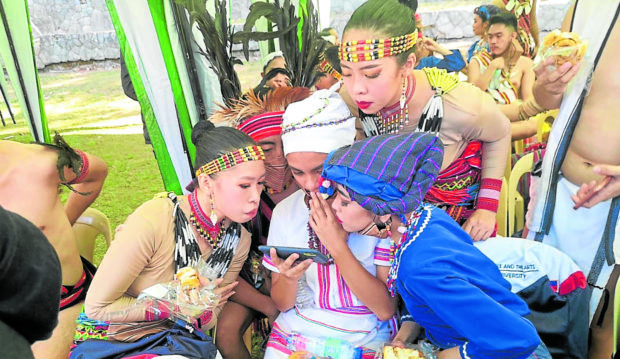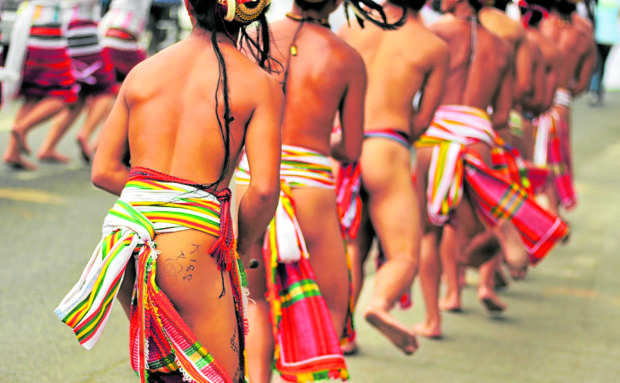Baguio, Benguet bets see ethnic pride in poll fate

CORDILLERA GATEWAY | The American colonial government had displaced the original Ibaloy settlements in what is now Baguio City, but the “Igorot” inhabitants rights to the their native lands were recognized in 1909 by the American Supreme Court. Baguio’s Cordillera roots paved the way for its joining the UNESCO world creative cities network. PHOTOS BY EV ESPIRITU
BAGUIO CITY, Benguet, Philippines — During the 2019 midterm elections, Baguio candidates made sure their Cordillera names and clan affiliations were prominently displayed in campaign posters.
That appeared to be a trend also in neighboring Benguet province, and would likely be repeated in the 2022 local campaign driven by an “Igorotak” consciousness that has naturally grown among young Cordillera voters, said professor Jimmy Fong, dean of the College of Arts and Communication at the University of the Philippines (UP) Baguio and a leading expert in Ibaloy studies.
Igorotak is a slogan that means, “I am a proud Igorot.” This battlecry could be traced back to Baguio campus activism in the late 1970s and early 1980s when students clamored for Igorot rights during martial law, said Fong, who has published studies on how indigenous Cordillera identity has shaped local pop culture.
Politicians have now sensed that young voters actively embrace their Cordillera identity, said Fong.
More importantly, “it is now the youth who have been empowered politically [to make choices for their communities],” former Benguet Rep. Ronald Cosalan told the Inquirer in an interview on March 5.
This is because the most respected leaders of many communities in the Cordillera region have since passed, and the clout of elders of indigenous peoples groups during elections has diminished, said Cosalan, who served as Benguet representative for five terms, from 1995 to 2001 and from 2010 to 2019.
According to an Inquirer report that cited data from the Commission on Elections in December last year, 52 percent of the more than 65.7 million registered voters for the 2022 elections are 31 to 59 years old (32.2 million), 33 percent (20.4 million) are youth voters between 18 and 30 years old and 14 percent (9.1 million) are 60 years old and above.
Background
In the Cordillera, 1,077,900 residents are registered to vote in May, and 243,756 of them live in Benguet. In Baguio, most of its 168,218 voters are also young.
These new voters have also forged new political dynamics in Baguio, a multicultural community that used to elect predominantly Ilocano leaders.
Baguio was designed and built as a hill station by the American colonial government and was initially opened to migrants. As a result, its original Ibaloy inhabitants were pushed to the city’s fringes.
“Ethnicity is involved in some stronger empirical relations, as the individual’s ethnolinguistic background can provide unambiguous cues on how to vote when the ethnolinguistic background of a candidate is relevant,” wrote political scientist Steven Rood in a paper that examined Baguio voting behavior during the 1986 snap elections and after the People Power Revolution.
At the time, the Ilocano had been the dominant ethnicity in the summer capital, with Cordillerans making up only a fourth of that period’s population, according to the paper, “Perspectives on the Electoral Behaviour of Baguio City Voters in a Transition Era.”
Rood’s paper was featured in the March 1991 edition of the Journal of Southeast Asian Studies, which was published by the Cambridge University Press.
“The upshot is that in terms of politics, Baguio City is as much an extension of the lowlands llocos as it is part of the Cordillera in which it is situated,” said Rood, the former country representative of the Asia Foundation, who taught political science at UP Baguio until the 1990s.
In that paper, Rood said: “Luis Lardizabal, an Ilocano, served from 1960-1963, and 1968-1979, and was the January 1988 [mayoral race] runner-up … The Ilocano Ernesto Bueno was elected in 1980, the Pangasinense Francisco Paraan was appointed OIC (officer in charge of Baguio) after the February 1986 Revolution, and the Pangasinense Ramon Labo Jr. won a narrow victory with 32 percent of the vote in January 1988.”
Pangasinan is part of the present-day Ilocos region, along with La Union, Ilocos Sur and Ilocos Norte.
That trend changed after the 1990 Luzon earthquake, when indigenous Cordillera leaders gradually won local polls.
During the 1986 snap elections, the late dictator Ferdinand Marcos “held a commanding lead in both the January 1986 [survey which revealed the] intentions of voters, and their February 1986 votes,” against the late President Corazon Aquino, Rood said.
But a series of surveys conducted by Rood indicated that Baguio voters—and Filipino voters by extension—were “receptive to appeals on issues” and were ready for “new politics in the post-Marcos era.”

CULTURE BEARERS Members of the Cordillera’s ethnolinguistic groups, among them students, have advocated for what started out as Igorot “regionalism,” which evolved into the fight for indigenous Filipino rights.
‘Complicated matter’
But Rood said, “the one strong link between the social and the political was ethnicity, the effects of which did not disappear after the 1986 Edsa People Power Revolution, but rather have fluctuated over time.”
“Naturally, ethnicity is a more complicated matter than a simple dichotomizing into two groupings [of Ilocanos and non-Ilocanos],” he cautioned. “Ilocanos [in Baguio] were much more likely to vote for Marcos,” Rood pointed out, but “[support for him] was weaker after the election, and faded into statistical insignificance by April 1986, after the Revolution.”
In this year’s elections in Benguet, ethnicity itself is being wielded as a weapon by some sectors.
One of Benguet’s congressional candidates is not from the province, so “the counterargument being pushed through the hashtag ‘Benguet4Benguets’ is for voters to cast their ballots only for Benguet candidates,” Fong said.
Community battle
While the formal council of elders has barely any influence as to who voters choose, Benguet clans in the past decade “have become more active in politics,” Cosalan said.
“The clan leaders may dictate who [the family would] vote for. They may even decide to apportion clan votes to please all rival candidates or show neutrality in the elections,” he said.
Politics in the province has largely been a community battle.
“Locals win or lose on their own merits and campaign strategies. Their dependence on national parties or alliances with national candidates are purely financial in nature. In my experience, that comes in trickles if at all because of our small voting population,” Cosalan said.
Social media has also been cited as a factor in Baguio and Cordillera voter behavior. But that may be a generalization, said Alejandro Ciencia Jr., professor of political science at UP Baguio.
While social media reach is everywhere, its impact may be stronger in urban areas than in rural areas, he said.
RELATED STORIES
Keeping Ibaloy history and heritage alive